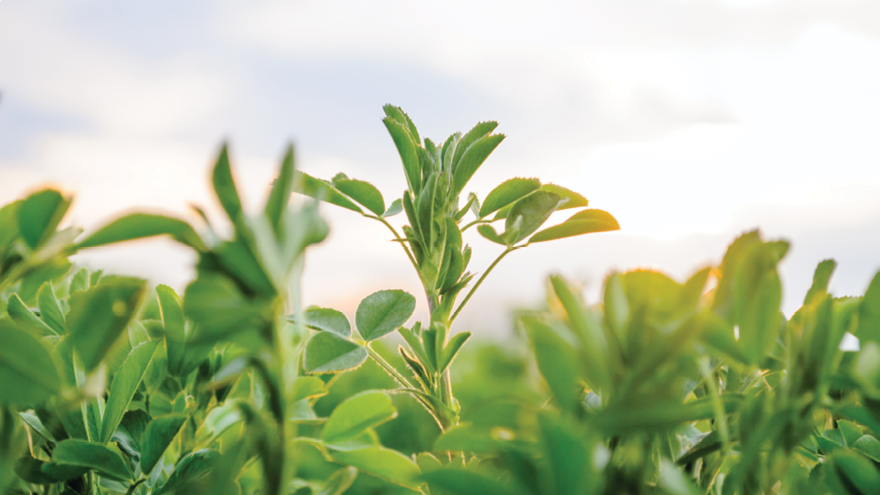
Lucerne weed control in winter
In mid-winter, when most plants are dormant, there is little to do in the agronomy world unless you have a crop of established lucerne. The dormant period is an ideal time to apply some robust weed control.
Successful crops of lucerne that last many years are characterised by well-managed fertility, effective weed control and grazing/cutting at appropriate times. Usually a lucerne paddock has run out and needs to be replaced when the weeds have got the better of the crop and reduced production below economical levels.Weeds establish themselves when the crop’s growth is restricted and has become less competitive. This is usually due to:
- A reduction in soil fertility and pH.
- Competition from other weeds, especially perennial ones.
- Gaps between plants caused by plant death due to other weeds, pest attack or bad grazing/cutting management.
When cutting and carrying lucerne make sure nutrients that are removed get replaced (especially Potash (K)) and keep an eye on pH as well. Lucerne grows best in a pH above 6.0 and if the pH drops below 5.5 a severe reduction in production will be observed. Top up the lime annually and apply fertiliser throughout the season. This allows the crop to grow vigorously during the growing period and compete aggressively with weeds, preventing them from establishing in the first place.
In mature crops of lucerne (those over 12 months old) weed control is mostly done during winter when the crop is dormant to reduce damage. A spray that removes old leaves could be harbouring aphids and disease mixed with residual herbicide which lays down a barrier preventing weeds from germination
in the spring.
Walking the paddocks during late autumn and identifying weeds and their numbers helps this spray decision. Then, during mid-winter, apply a mixture of a contact burn down spray (containing paraquat) and another residual herbicide (usually containing atrazine), browning down weeds and leaving a residual herbicide layer on the soil surface to remove any newly emerging weeds.
Monitoring the established crops for weeds during the spring and autumn is also important as other selective herbicides can be used on specific weeds throughout the year. Don’t forget the use of the mower, as removing annual weeds before they set seed is also an important form of weed control during the season.
For more information on managing weeds in established lucerne contact your local PGG Wrightson Technical
Field Representative.
Top Tips:
- Weeds reduce the yield quality and longevity of your lucerne crop.
- Make sure the fertility of the soil is adequate and maintained, especially K and pH levels.
- Lucerne crops less than 12 months old need to be managed differently.
- Walk the paddocks for weeds to help with herbicide product selection.
- Established crops make the most of a winter spray when the crop is dormant.



